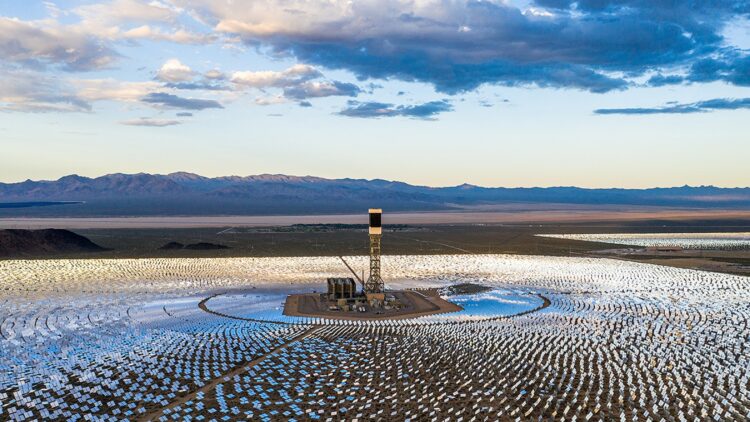Imagine a world where clean energy fuels our homes, industries, and cities, drastically reducing our reliance on fossil fuels. At the heart of this vision lies the largest solar generator on the planet, a monumental structure that harnesses the power of the sun using advanced technology. This is the Ivanpah Solar Electric Generating System (ISEGS), where 500,000 mirrors diligently work in order to produce renewable energy in the scorching Mojave Desert.
How advanced heliostat technology is able to power ISEGS
Located in California’s San Bernardino County, ISEGS represents a giant leap forward in solar power technology. Officially operational since December 30, 2013, this 386-megawatt facility consists of three solar thermal power plants, collectively utilizing 173,500 heliostats—mirrors that concentrate sunlight onto power tower receivers.
Developed by BrightSource Energy and constructed by Bechtel, this project was a collaboration that also received significant financial backing from NRG Energy and Google.
The three plants—Power Plant 1, Power Plant 2, and Power Plant 3—operated on a similar principle yet vary in size and capacity. Power Plant 1 produces 120 megawatts with 53,500 heliostats, while the other two plants generate 133 megawatts each with 60,000 heliostats. The expansive facility stretches over 3,500 acres at the base of Clark Mountain, displaying a remarkable engineering feat that is designed to maximize solar energy capture.
High-tech steam turbines are the key forces behind ISEGS’ energy conversion process
The operation of ISEGS hinges on its innovative steam turbine technology. The heliostats track the trajectory of the sun, directing concentrated sunlight to the receivers atop the towers, which absorb the heat to produce steam.
This steam powers Rankine-cycle reheat turbines, generating electricity that feeds into the grid and provides power to approximately 140,000 homes.
To ensure consistent energy production, especially during low sunlight periods, each plant is equipped with natural gas-fired steam boilers. These supplementary systems ensure that operations can continue smoothly, demonstrating the facility’s hybrid approach to energy generation.
How sustainability and efficiency combine to make a transformative impact
ISEGS is not only a technological marvel; it also prioritizes sustainability. The facility employs dry cooling systems to minimize water consumption, capping its annual water consumption at 100 acre-feet. This efficiency is crucial in the arid Mojave Desert, where water resources are scarce. Additionally, the layout of the solar field is designed to avoid disrupting sensitive vegetation, underscoring a commitment to environmental responsibility.
Although the construction of ISEGS faced numerous challenges, Bechtel’s use of Six Sigma methodologies allowed for efficient project management, exceeding installation goals by achieving over 800 heliostats installed daily during peak construction.
Since its launch, ISEGS has nearly doubled the United States’ commercial solar thermal energy output, setting a benchmark for future renewable projects.
“We see Ivanpah changing the energy landscape by proving that utility-scale solar is not only possible but incredibly beneficial to both the economy and how we produce and consume energy,” says Tom Doyle, the president of NRG Energy.
Altogether, the cutting-edge design and operational efficiency of ISEGS serve as a beacon of hope in combating climate change and fostering a sustainable energy future. It shows that significant investments in renewable technology can yield considerable returns, both in an environmental and economic sense.
Ultimately, the Ivanpah Solar Electric Generating System serves as an effective product of solar energy in transforming our energy landscape. As we confront the pressing challenges of climate change, projects such as ISEGS lead us on the path toward a greener future. With each mirror reflecting the sun, we can envision a planet that is powered by clean, green energy, opening the door for similar projects across the globe.

